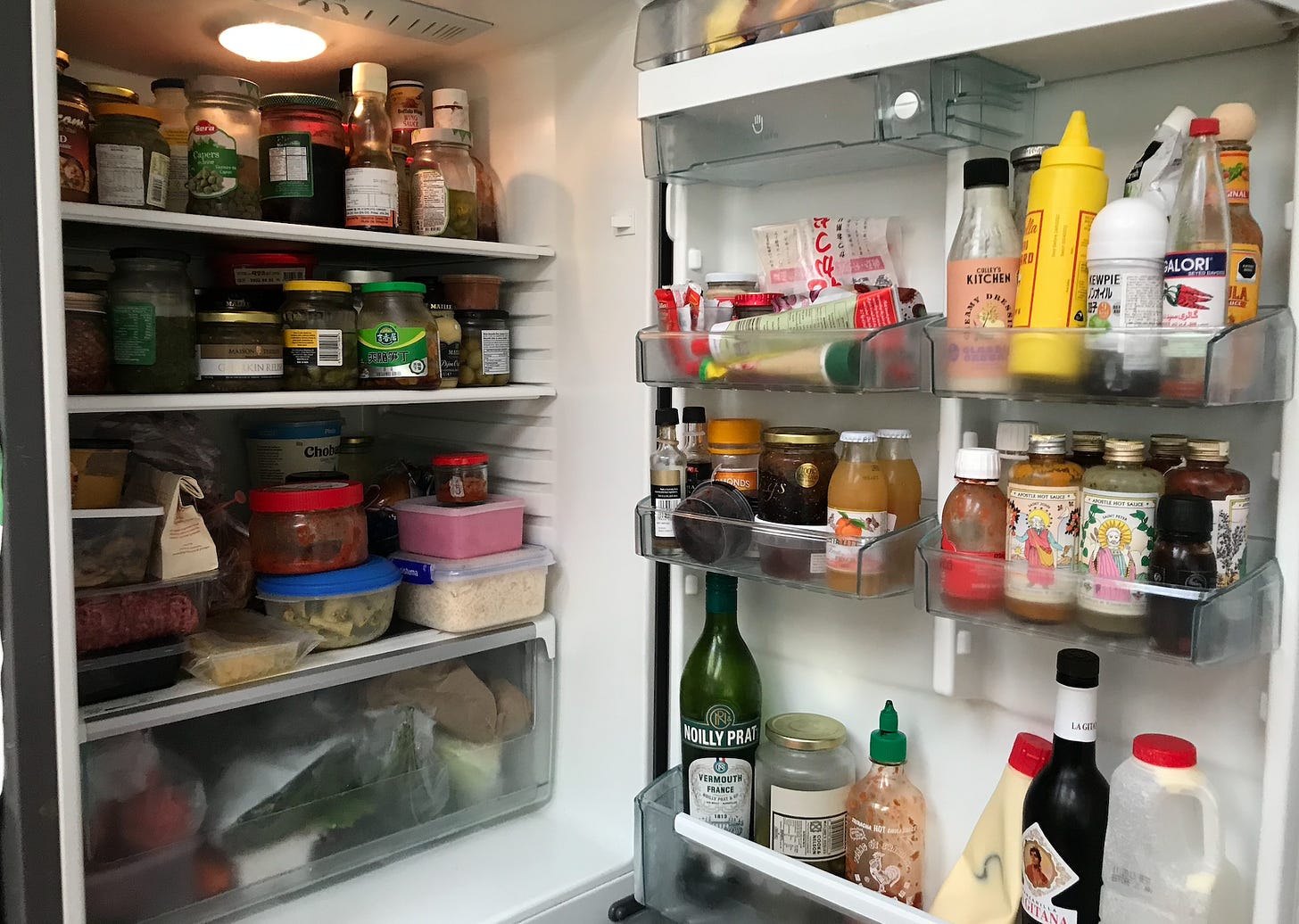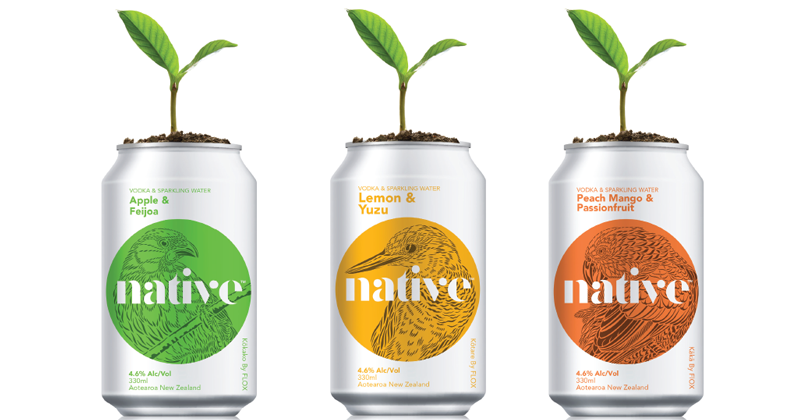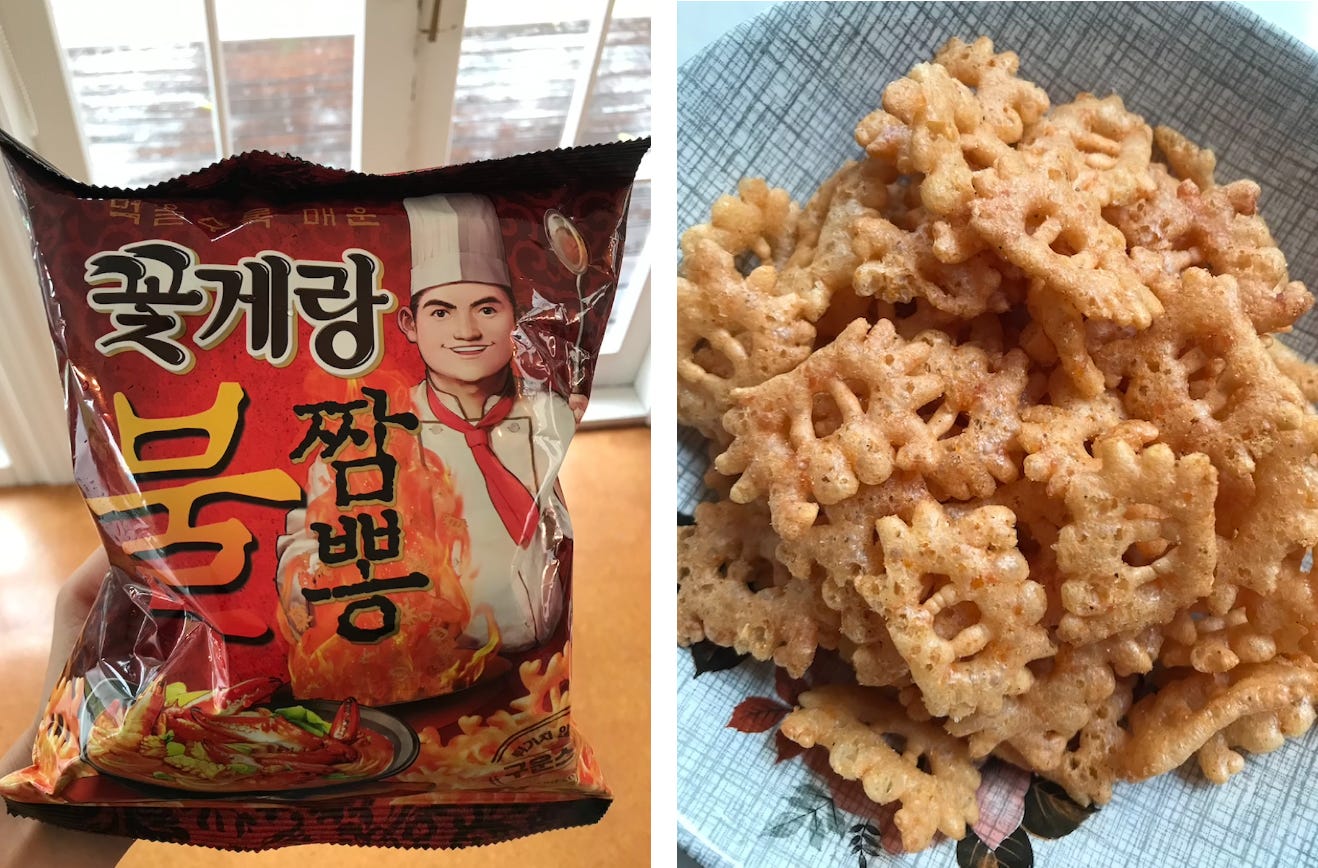Finding clarity among a cacophony of kai
This year I’m going to make my way through all those mysterious jars of ingredients in my fridge - literally and symbolically.
Nau mai, haere mai. Welcome back to The Boil Up, The Spinoff’s weekly food newsletter produced in partnership with Boring Oat Milk. Written by me, Charlotte Muru-Lanning. It’s lovely to have you here!
As we find our way back into the rhythms of our regular routine post-summer (if you can call it that) break, I’m on a campaign for clarity – in terms of what I’m writing about, and, as it happens, in my kitchen.
In our household of four, we’ve accumulated an extraordinary number of double-ups in the fridge. Two packages each of: kalamata olives, kimchi, sesame oil, preserved lemons, chilli crisp, jalapeños, gherkins, harissa, mango pickle, dijon mustard, tomato paste and cream cheese. I won’t even start on the number of almost identical hot sauces, chutneys, jams and tamari that clamour for space among it all. I’m fully aware of how lucky I am to have a fridge so wondrously abundant with kai, in both scale and range. Ingredient substitutions are almost always unnecessary in our kitchen.
Our collection is as impressive as it is frightening. And so, I’ve found myself on a persistent (and perhaps futile) mission to work my way through the surplus and nearly inedible. My self-imposed rule that every dish must use a spoonful, splash or splodge from this glut of jars and bottles has resulted in gimbap-filled lunch boxes, olive-heavy salads, tomato and shellfish risotto and relentless dashes of hot sauce. Clearly, there’s creativity to be found among the chaos, but I’m looking forward to when the cool air of the fridge circulates freely again and my dinners can be guided by something other than a superfluous jar teetering on the edge of its shelf.
In a similar vein, I’ve been collating, tidying and honing in on where I want to focus my food coverage this year – and in the spirit of setting intentions, I’d love to share a couple of these ideas with you.
One of the great myths we tell ourselves in this country is that we have no cuisine. It’s a misconception to which I’ve always taken offence. For starters, we have a very obvious counter argument to this: kai Māori. Whether we have a cuisine beyond kai Māori is debatable, but we certainly have culinary traditions particular to Aotearoa. In the coming year, I’m planning on looking to better understand what New Zealand food is and what certain foods say about who we are. How exactly this will take shape, I’m still working through, but on my sprawling brainstorm page I’ve jotted down supermarket cakes, BYO dining, St Pierre’s Sushi, food courts, tamarillo, Raro, pies, tuckshops, bread, spice drawers, Chesdale cheese, pottles of mussels and about 50 more things that, like the contents of my fridge, I’ll need to whittle away at.
I’ll also be keeping a keen eye out for stories that look at what it means to work in food industries – the backbone of New Zealand’s culinary landscape – whether that be the workers who: process our seafood, cook in marae wharekai, wash dishes in restaurant kitchens, bag our groceries, pick grapes for wine, package snacks or wake up in the small hours to bake bread.
I’m hoping there'll be a symbiotic relationship between this newsletter, as a place to weave these threads together, and the fully-formed stories that will find their way onto The Spinoff website. As always, I’d love to hear your thoughts, tips, opinions and criticisms along the way.
A quick shout before I carry on: On February 5 in Morningside, Auckland The Spinoff will host the Carpet Club – and you’re invited. The Carpet Club is a subterranean Spinoff at the Morningside Live Block Party and will span a range of Spinoffy things. Snappy, guest-star-sprinkled live versions of our podcasts Gone by Lunchtime and The Real Pod, live comedy from Chris Parker, Janaye Henry, Guy Montgomery and Courtney Dawson, plus Toby and Toby: Toby Manhire interviewing and Toby Morris live-drawing some very special guests. Tickets are strictly limited so get in quick.
Iced coffee season is here. Admittedly we’ve been chugging oat iced lattes all year long, but for those of you still leaning into Mother Nature, this is the PSA you’ve been waiting for. It’s officially iced coffee season. Head to boringmilk.com for your summer supply of New Zealand-made oat milk, straight from the source.
Weekly bites
It was a constant theme of 2022 – and unfortunately, shortages look like they might continue to plague our food systems this year. If you’ve been wondering why the egg aisle is bare, Olivia Sisson has an explanation over on The Spinoff. And a nationwide CO2 shortage looks to impact the availability of chicken products, fizzy drinks, brewers, cheese, preserved meats, sparkling wine and ready-to-eat meals, with craft beer brewers Garage Project – who say they have more than 60,000 litres of unfinished beer waiting for carbonation – warning they’ll be completely out of beer unless they have supply within the next two weeks.
In December last year, the government gave legal backing to a rāhui placed by Taranaki hapū, banning collection of kaimoana from 70 kilometres of the coast. Hapū were especially worried about the numbers of visitors, particularly from outside the region, taking seafood. Now, specific concerns about pāua stocks in Taranaki, Hawke’s Bay and Wairarapa, have resulted in options being explored to cut daily limits. The Fisheries New Zealand document, which is out for public consultation, includes options that could see daily pāua catch limits decreased across Taranaki, the East Cape, Hawke’s Bay, Wairarapa and Wellington, reports Stuff. The current catch limit for recreational gatherers is 10 per person each day and the review includes options of reducing the daily recreational take down to five or three.
Noma – often described as “the world’s best restaurant” – announced their future closure earlier in the month. The end of the Copenhagen restaurant, set for late 2024, has deeply saddened some, but left many more speculating about the future of fine dining. Noma, like many other fine dining establishments, depended heavily on uncompensated labour – with around 30 unpaid interns helping to create set menus which cost upward of $1000NZ per person. The pushback against this treatment meant they started to actually pay their interns late last year which essentially made their business unfeasible. Tāmaki Makaurau had our own reckoning in 2021 when Metro published a story talking to ex-workers of Pasture (a restaurant that charges $150 for corkage) who described a toxic work environment and regular instances of being underpaid. I recall turning down a part-time wait staff position as a student at what was at the time one of the best restaurants in the country when they offered me minimum wage – I took another that paid more without me having to memorise a lengthy wine list, ever-changing menu or invest in an ugly pair of black shoes. Food media is often a complicit ring in this chain, celebrating fanciful, creative plates, bowls and granite slabs over any kind of concern for the treatment of those responsible for it. If a dish relies on exploitation, can we really describe it as delicious? (Answer: no).
Make Native Sparkling your natural summer drink option
After a summer drink that’s not filled with unidentifiable chemicals? Native Sparkling is a New Zealand owned and operated company that makes their alcoholic drinks with real fruit, premium plant-based vodka and sparkling water. It’s naturally refreshing and naturally delicious.
Native Sparkling wants to connect our love for good times with doing better for the planet, so every 4x10pks sold supports the planting of a native tree- starting on their family farm in the Manawatu. Try it this summer.
The weekly snack
Hot Crab chips, $3.49 from Kosco Metro: While relatively common overseas, as far as mainstream chips go in this country, odes to kaimoana are rare to non-existent (beyond the often controversial seafood dip). But clearly, I have a weak spot for crustacean-flavoured snacks. Add a flicker of chilli to the mix and I’m sold. These, which I bought on a fleeting trip to Ōtautahi a few months back, are essentially a chip-ified Singaporean chilli crab (despite being from Korea). And just as the form of the chips themselves is a nod to their crabby forebears, so is the taste: slightly salty, slightly sweet with just enough umami. The allure of seafood-laced snacks is in their accessible luxuriousness, and these are exactly that. None of us could, or should, gorge ourselves on a massive bowl of chilli-infused crab everyday – but with these chips, perhaps we can. 7.5/10
Talk next week!
Hei kōnā mai, Charlotte



















